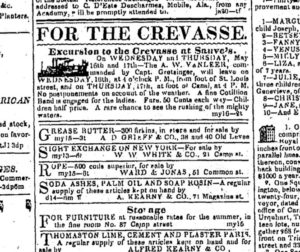Back in high school, we sometimes played D&D in a format that we called a house game. This format was so called because every adventure was required to begin and end at a home base (the “house”). We did this because it allowed us to rotate DM duties, and slowly develop the campaign world jointly, rather than requiring a large time investment upfront by a single DM. This was the way we ran the Blackwater Falls campaign.
This is somewhat similar to the way I see many games being run online now (ConstantCon, FLAILSNAILS, etc), though the primary concern is not rotating referees, but rather a changing player roster. The PCs in the next session may not be the same as the PCs in the previous session. In other words, it is assumed that PCs return to town (whatever “town” means for the particular campaign).
This can raise a problem of logical narrative. What happens if the PCs end the session on, for example, dungeon level 3? Jeff Rients addresses this with his Triple Secret Random Dungeon Fate Chart of Very Probable Doom. Basically, if you are still in the dungeon at the end of the session, you need to make a roll (50% success) adjusted down (-10%) by dungeon level and up (+10%) by character level to see if you escape without mishap. If you fail that roll, you are sent to the Chart of Very Probable Doom to see what happens (the name says it all).
Jeff’s approach and table are inspired, but I am modifying the method slightly for my own use. First, rather than making a percentile roll and adjusting for level, the character makes a saving throw (the most favorable save may be used). This models the increasing competency of being higher level and reuses the numbers that are already on the character sheet (not that Jeff’s percentages are hard to remember; I just like saving throws). You may also add your single most favorable ability modifier as a bonus. Penalty is applied by dungeon level as per Jeff, but only -1 (5%) per level (I may change this to -2 in the future). Second, regarding the wilderness. The number of hexes away from the nearest known point of civilization is equivalent to dungeon level in terms of penalty. Third, the expected consequence of failure is death. I may have a table with other options, but its contents are confidential.
Note that whatever system I happen to be running, it is likely that the main setting assumptions of B/X D&D will hold: the wilderness is a perilous place. You might run into a dragon. I stock the wilderness map without consideration of PC levels. Merchants and other travelers generally move in large, armed caravans. Maybe you should stick to the dungeon for the first few levels (not that that’s any guarantee of safety either).
This post is not intended to be in any way original. I just want a page that I can reference describing the way I plan to run a game.
9 July 2012 edit: Well, look at this, an ODD74 thread from 2008 (Starting my Jakalla Megadungeon) that features a “table of despair” for characters that have overstayed their welcome in the dungeon.

